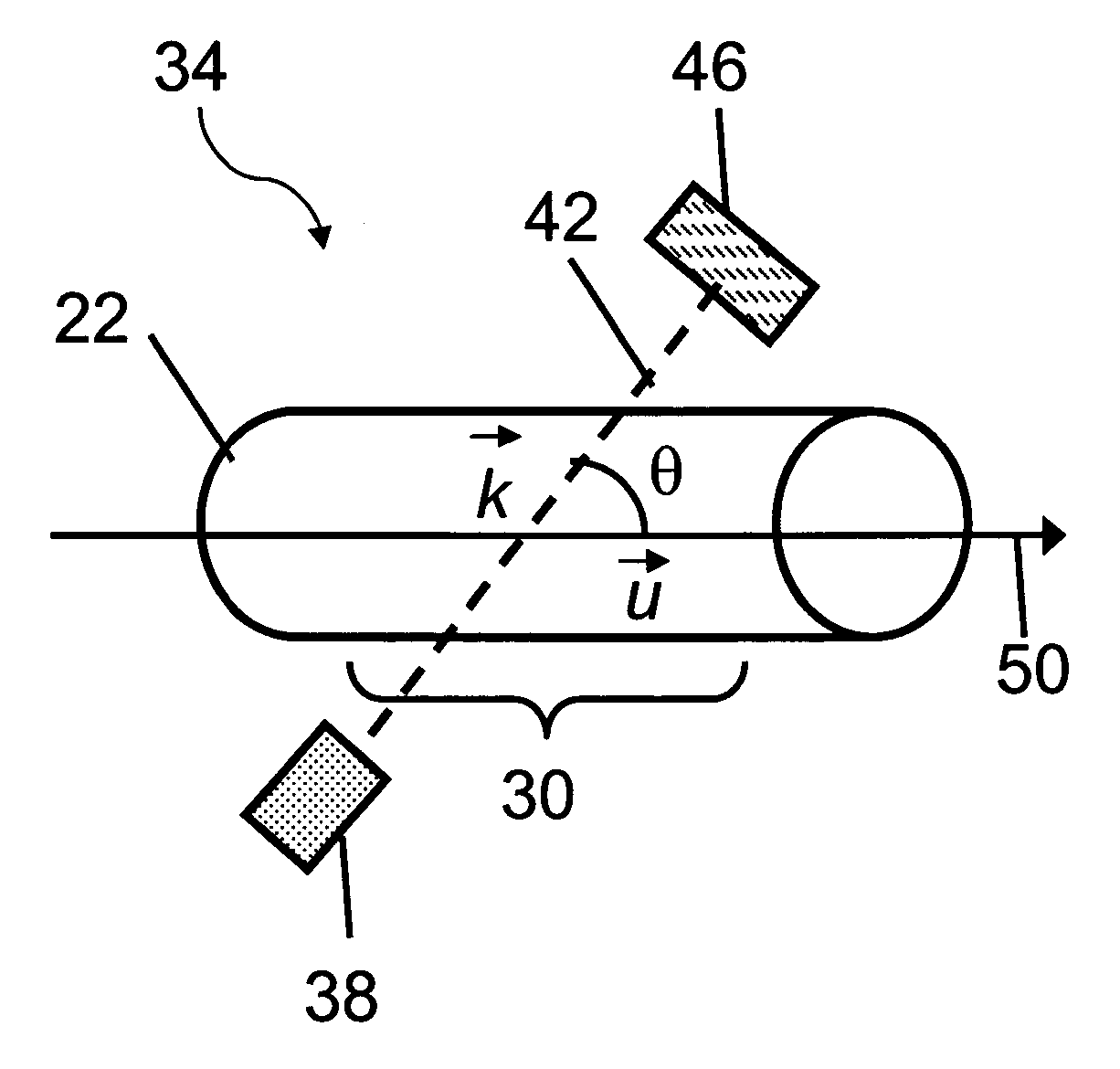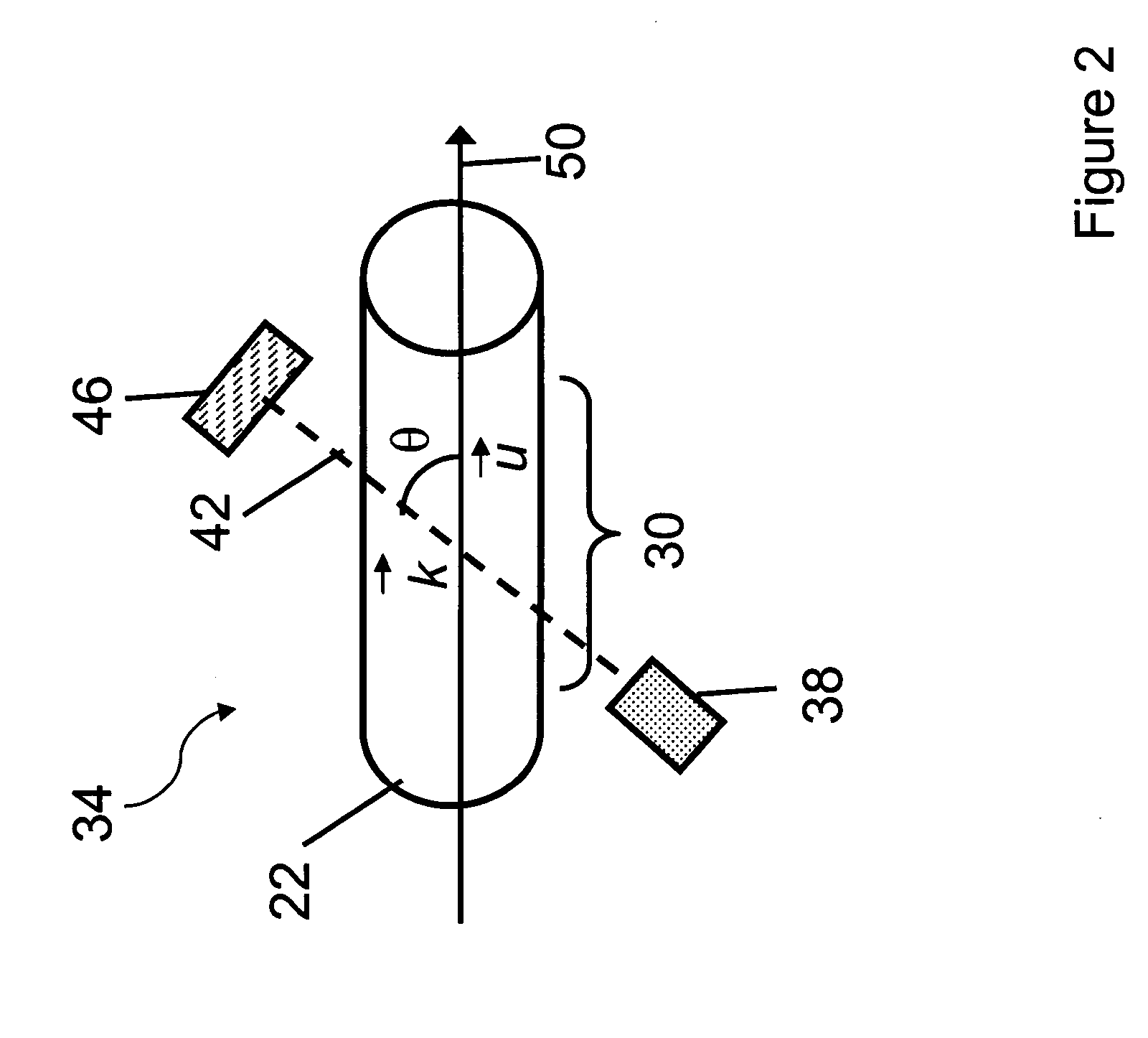System for monitoring a drying process
a technology for drying process and monitoring system, applied in the field of sensors, can solve the problems of non-intrusive sensors and many commercial freeze-drying processes, and achieve the effects of saving time, improving efficiency, and accurately measuring
- Summary
- Abstract
- Description
- Claims
- Application Information
AI Technical Summary
Benefits of technology
Problems solved by technology
Method used
Image
Examples
Embodiment Construction
[0033]FIG. 1 shows an illustrative embodiment of an apparatus 10 for applying the optical detection system during a drying process of a product. The apparatus 10 includes a first chamber 14, a second chamber 18, a duct 22, and a processor 26. The duct 22 includes a diagnostic region 30. The duct 22 defines a bore, through which a gas can flow when exiting the first chamber 14. The diagnostic region 30 can include an optical detection system (e.g., as shown in FIGS. 2, 4, 6, or 7) for measuring at least one parameter associated with the gas flowing through the bore of the duct 22. The apparatus 10 can be at high pressure or low-pressure.
[0034] The processor 26 can receive data from the diagnostic region 30. In some embodiments, the processor 26 can provide feedback to the first chamber 14 or the second chamber 18 to control processing of the product. Data transmission to and from the processor 26 can occur using a cable or cables 32, or via a wireless transmission.
[0035] In various...
PUM
| Property | Measurement | Unit |
|---|---|---|
| pressures | aaaaa | aaaaa |
| wavelength tuning | aaaaa | aaaaa |
| angle | aaaaa | aaaaa |
Abstract
Description
Claims
Application Information
 Login to View More
Login to View More - R&D
- Intellectual Property
- Life Sciences
- Materials
- Tech Scout
- Unparalleled Data Quality
- Higher Quality Content
- 60% Fewer Hallucinations
Browse by: Latest US Patents, China's latest patents, Technical Efficacy Thesaurus, Application Domain, Technology Topic, Popular Technical Reports.
© 2025 PatSnap. All rights reserved.Legal|Privacy policy|Modern Slavery Act Transparency Statement|Sitemap|About US| Contact US: help@patsnap.com



